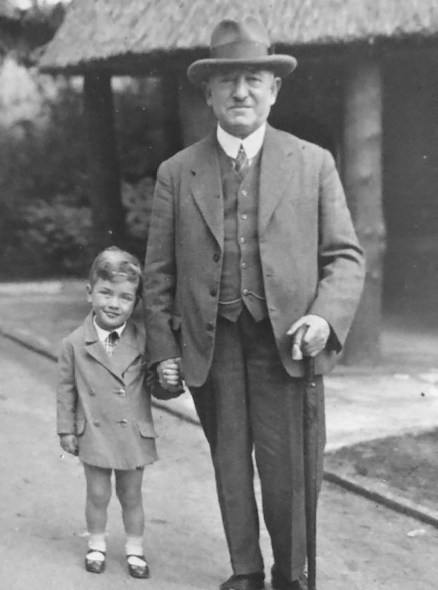Search for Names, Places and Biographies
Already layed Stumbling Stones
Suche
Dr. Max Mendel * 1864
Annenstraße 9 (Hamburg-Mitte, St. Pauli)
1942 Theresienstadt
ermordet am 25.12.1942
further stumbling stones in Annenstraße 9:
Therese Mendel
Max Mendel, born 7/4/1864 in Stargard, imprisoned at Fuhlsbüttel concentration camp and Oslebshausen penitentiary in 1939, deported to Theresienstadt on 7/15/1942, died there on 12/25/1942
Therese Mendel, née Isenthal, born 6/5/1871 in Hamburg, deported to Theresienstadt on 7/15/1942, died there on 11/16/1942
Annenstrasse 9
Max Mendel was born in Stargard in Pomerania, then a German town of about 16,000 inhabitants. His father, Dr. Phil. Isidor Mendel, a private scholar, and his wife Florentine, née Schlesinger, lived in Berlin at the end of the 19th century.
Max Mendel studied medicine and became a general practitioner. He received his approbation in 1887 and settled in Hamburg in 1888. In 1896, he married Therese Isenthal, born in Hamburg as the daughter of Theodor Isenthal, a lottery ticket vendor, and his wife Regine, née Steiner. The Isenthals lived at Harvestehuder Weg 46 when their daughter married, Max Mendel in St. Pauli in Langereihe 93. Bruno Mendel, a 33-year-old merchant from Berlin and probably a brother of Max, was a marriage witness. Langereihe was the original name of the western part of today’s Reeperbahn, leading to the Nobistor gate, flanked by buildings erected between 1662 and 1729. Max and Therese Mendel’s daughter Lotte Marie was born at the Mendels’ home in Langereihe in 1897, their son Herbert Isidor in 1899.
Later, the Mendels’ home as well as Max Mendel’s medical practice were at Annenstrasse 9, also in St. Pauli. The family owned the spacious twelve-room house and lived there, probably up to 1938. They were well to do and had domestic servants. Before the persecution by the Nazis, the Mendel family had been well situated. Therese Mendel had always been socially dedicated. During WW I, she ran "war kitchens” in Hamburg; after the war, these were continued under her supervision as low-price restaurants for the needy. The Mendels’ children enjoyed a good education – Herbert Isidor attended the Johanneum high school and studied law, Lotte Marie achieved her high school degree at the "Wendtsche Gymnasium” and studied dentistry, which was quite unusual for a woman in those days. Artistic and musical interests did not fall short in the family. The children got violin lessons and accompanied their parents to concerts and the opera.
In 1933, the children were grown up. Daughter Lotte had her dentist’s office at Lattenkamp 8. According to the official address book, she still lived with her parents in Annenstrasse in 1933. Lotte Mendel married in June 1939, and left Hamburg in August to settle in England.
Her brother Herbert, a lawyer, had married Edith Erna Fraenkel, also a native of Hamburg, in 1926; later, the couple settled in Los Angeles.
Max Mendel was already over 65 years old when the persecution of Jews began in 1933, but he did manage to keep practicing. On January 1st, 1938, his accreditation with the statutory health insurance system was revoked; on September 30th, 1938, Max Mendel was deprived of his approbation as a physician – like all other Jewish doctors in Germany. Previously, he had been sentenced to jail for allegedly having performed illegal abortions, imprisoned at the Fuhlsbüttel concentration camp and subsequently at Oslebshausen prison in Bremen. Before being committed to the "Jews’ house” in Bogenstrasse, Max and Therese Mendel lived at Haynstrasse 7 for a short time.
Like all wealthy Jews in Germany, the Mendel family was shamelessly plundered. They had to sell their house and surrender all their jewelry and silverware to the public purchasing agency in Bäckerbreitergang. On account of their age, Max Mendel was 78 years old, they received a deportation order to Theresienstadt, where Therese died on November 16th, Max on Christmas day, 1942.
The auctioneer Wilhelm Wehling auctioned their furniture and household goods in September 1942.
Translated by Peter Hubschmid
Kindly supported by the Hermann Reemtsma Stiftung, Hamburg.
Stand: October 2017
© Susanne Lohmeyer
Quellen: 1; 2 (FVg 7038); 4; 7; 8; StaH 213-8 Staatsanwaltschaft Oberlandesgericht – Verwaltung Abl.2, 451 a E1,1c; StaH 214-1 Gerichtsvollzieherwesen 499; StaH 241-1 II, Abl 13, K33-45; StaH 332-5 Standesämter, 13172 + 1914/1899; StaH 332-5, 8807 + 259/1926; StaH 332-5, 8577 + 246/1896; StaH 351-11 AfW 040764 und 110807 Dr. Max Mendel; HAB II 1910; 1943; Anna von Villiez, Mit aller Kraft verdrängt, S. 354.
Zur Nummerierung häufig genutzter Quellen siehe Link "Recherche und Quellen".


